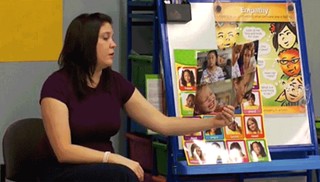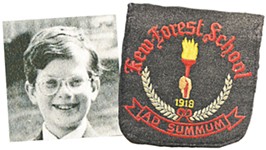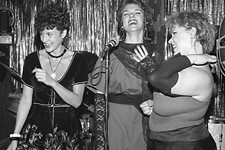AISD Documentary Captures Spirit of Recent Initiative
SEL improves grades, reduces absenteeism, and more.
By R.U. Steinberg, 9:00AM, Wed. Jun. 4, 2014

This spring, the Austin Independent School District (AISD) was the subject of a 7-minute documentary called Austin ISD: A District Embracing SEL.
Produced by Seattle nonprofit Committee for Children, the film captures how the district has embraced something called "social emotional learning" or SEL and how this five-year initiative that began in 2011 is becoming a fabric of the culture in all AISD schools and is helping students not only feel more welcome and get better grades, but reducing discipline referrals and absenteeism.
What is SEL exactly? According to Edutopia.org, SEL is a "process through which we learn to recognize and manage emotions, care about others, make good decisions, behave ethically and responsibly, develop positive relationships, and avoid negative behaviors." The term itself came about in the mid-1990s, but the concepts behind it were developed by Dr. James P. Comer and his colleagues at the Yale Child Study Center when they created the School Development Program in 1968. Working with inner city elementary school students, they found was if schools gave students social and emotional supports, they succeeded better academically.
AISD has been working with the Collaborative for Academic, Social and Emotional Learning (CASEL), a national organization focused on SEL. AISD picked Committee for Children's Second Step program for elementary and middle schools and the program for high schools is called School Connect. Austin was one of the first three cities chosen by CASEL for its Collaborative District Initiative, which focuses on supporting districts’ capacities to promote SEL for all students. The initiative now includes eight districts: Anchorage, Alaska, Austin, Texas, Cleveland, Ohio, Chicago, Illinois, Nashville, Tennessee, Oakland, California, Sacramento, California, and Reno, Nevada.
CASEL began the initiative after analyzing individual schools using SEL on the East Coast, encompassing almost 250,000 students. What they found was the schools had gains in students' attitudes about their schools, themselves, and others, more social behavior, and increased scores on standardized math and reading tests, while reducing problem behaviors and emotional distress. The Collaborative District Initiative is CASEL's first attempt to implement SEL on a district-wide level.
Caroline Chase, SEL Program Specialist for AISD, says AISD piloted parts of the SEL curriculum at Allison, Galindo, Govalle, and Metz Elementary schools in 2010-11. These schools demonstrated decreased discipline referrals and anecdotal evidence of increased time on task for students. Through SEL, AISD is trying to help teachers and principals understand the bottom line is if kids do not feel safe or included at school, they're not going to learn. "We're giving teachers and principals some tools to help build a culture on their campuses that is inclusive and inviting to kids. We're also going to give them lessons they can teach to help students have the ability and skillsets to follow rules that they set up through their positive behavior support system. SEL is for everybody. It's not just for kids--it's for adults as well."
She says the initiative began thanks to work in 2011 at the University of Texas Charter School in Austin. "They had been using Second Step curriculum and the principal had worked really hard to make her campus an SEL campus. She had some wonderful outcomes not only with behavior, but how it really improved students' ability to learn in the classroom when they felt safe and they felt like their voices were heard. And they learned how to help them manage their own behavior rather than teachers having to do that. SEL teaches kids how to recognize their emotions and techniques they can use as coping strategies to help calm themselves down so they could continue learning. Another big piece of it is teaching kids how to problem solve together and how to resolve a conflict together."
Chase says there are 3 parts to SEL. "There's the explicit instruction piece, which includes the lessons you teach to the students. There's the climate and culture piece, which is 'What does the school feel like in general when you walk in and as you walk through the halls?' "How do you see people interact with one another?" 'Does it feel like a safe and welcoming environment?' And the last piece is integration and with that, what we're looking at is how do we intentionally provide opportunities for SEL skill practice within an academic lesson?
Chase says that formal SEL training began in Summer 2011 with vertical teams of SEL coaches, teachers, and principals at elementary and middle schools that feed into Austin and Crocket high schools. In 2012-13, teams were added for Eastside Memorial (formerly called Johnston), McCallum, and Travis. For 2013-14, Akins and a part of LBJ were added. For 2014-15, Reagan, Bowie, and the rest of LBJ will be added. Anderson and Lanier will be added in 2015-16, when the training will be completed.
She adds that data is being collected through CASEL by the American Institutes for Research. "They have been collecting data for the first three years to see what kind of progress we are making. What they are looking at primarily are our campus climate surveys that are done every year by the faculty, students, and parents. Some of the questions for kids are SEL type questions like, 'Do I feel safe on my campus?' 'Do students treat one another with respect?' 'Do I feel welcome in my classroom?'"
AISD is funding the initiative with grants from the NoVo Foundation, Jeanne and Michael Klein, Betsy and Hughes Abell with the Buena Vista Foundation, Carmel and Thomas Borders with the Tapestry Foundation, the RGK Foundation, and others. Together, the Kleins, the Buena Vista Foundation, and the Tapestry Foundation made a $1 million challenge grant in 2012 that was matched by the St. David's Community Foundation this past fall.
Got something to say on the subject? Send a letter to the editor.
A note to readers: Bold and uncensored, The Austin Chronicle has been Austin’s independent news source for over 40 years, expressing the community’s political and environmental concerns and supporting its active cultural scene. Now more than ever, we need your support to continue supplying Austin with independent, free press. If real news is important to you, please consider making a donation of $5, $10 or whatever you can afford, to help keep our journalism on stands.
July 24, 2020
AISD, SEL, CASEL, social emotional learning








